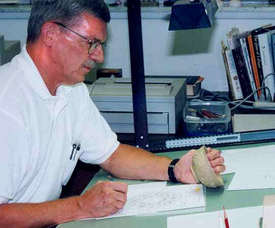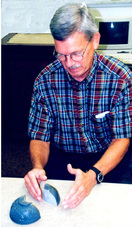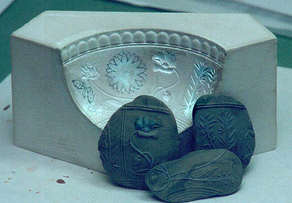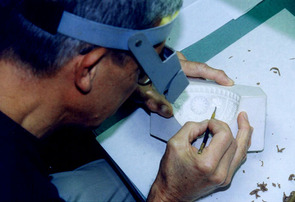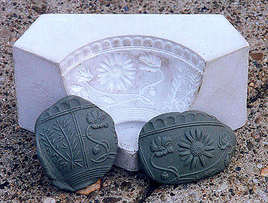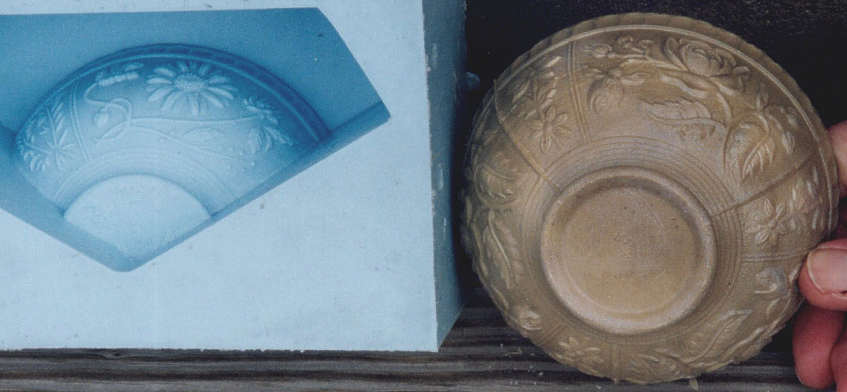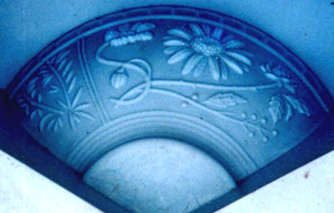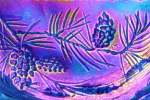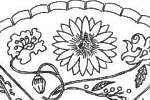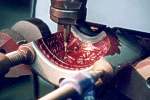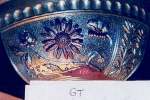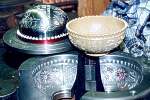Making the plaster mock-up
The next step in the process was to translate my "Flowers of the World" design onto a plaster model that the mould makers would then work from to create the metal mould for the actual glassmaking. Fenton's Jon Saffell is the "sculptor" who undertook this fascinating and exceptionally skilled task. The photos (courtesy of Howard Seufer) will take you stage by stage through this.
|
On the left, Jon is working with my drawing and a wax cast that was made using the "Woodsland Pine" plunger and the Imperial Rose exterior mould.
On the right, Jon is using a similar cast, this one made from epoxy resin. The cast has been split so that a "one third" slice, which he subsequently worked with to produce the new "Flowers of the World" mould. This ensures that it would fit the "Woodsland Pine" plunger. Jon modified the one third section that you can see in the photo and then worked directly with it. |
Above, on the left is an initial plaster cast taken from the “one third” segment on which Jon was sculpting my "Flowers of the World" design. The three dark shapes in front of the plaster sculpture are clay impressions to check on his progress. At this early stage in the sculpting, you can see the multiple layers Jon put into the rose and poppy - the sunflower hasn't yet been worked on - there is only the black outline of the petals. When the sunflower was later sculpted, it, too, had several layers to give depth. In the centre is a wonderful shot of Jon working on the plaster as he sculpts the fine details of the rose petals, and on the right is the finished “one third” sculpture with the black clay impressions that had been taken from it. These impressions show how the glass formed from the mould will actually appear. Note the depth of the petals on the sunflower and how they seem to stand up from the surface.
The next step is to make a rubber impression of Jon's plaster model. It is shown below, left.
My initials (GT) were added on one of the segments - if you have one of the commemoratives, see if you can spot those initials in the exterior pattern. If you're wondering why we chose to include them in the design, well, the answer comes a bit further along the journey of making the mould. However, those initials caused us a bit of consternation when the metal mould was being made, as their location became something of a headache, as you'll see when you read on.
Finally, Jon's work was done and Fenton were ready to begin the next stage - making the metal mould.
Continue the journey - Making the mould
